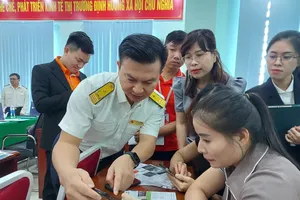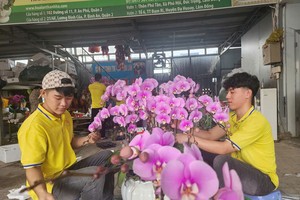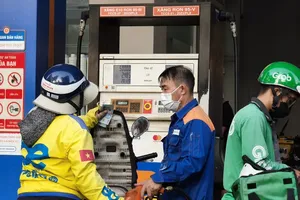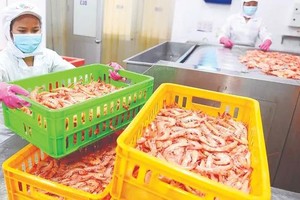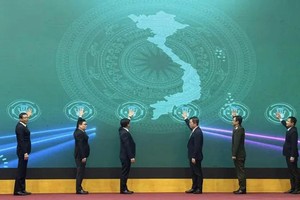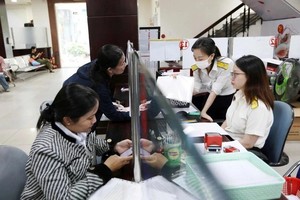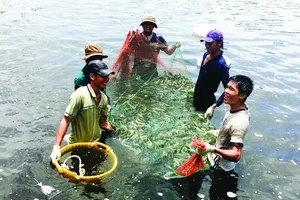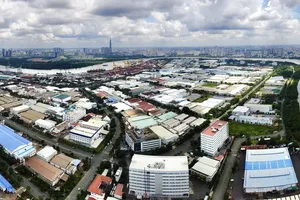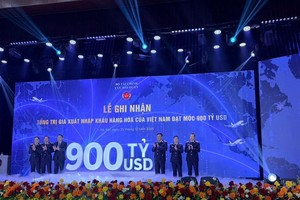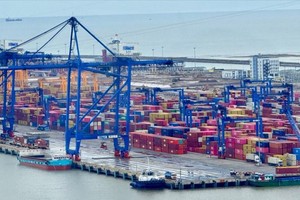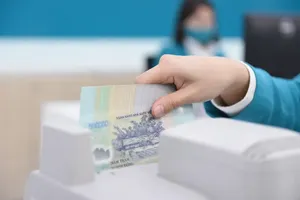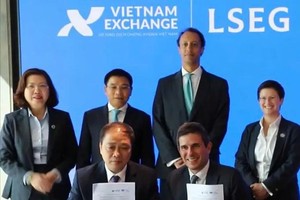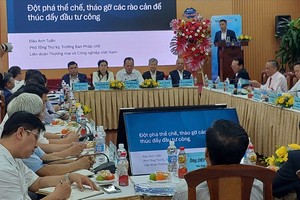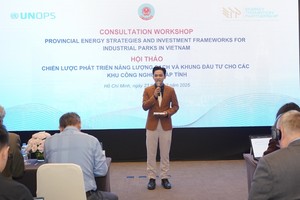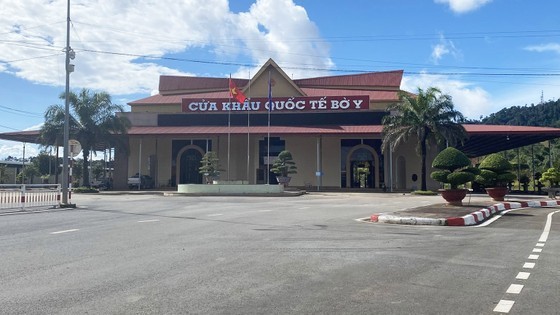
A visit to Le Thanh Border-gate Economic Zone these days reveals modern traffic facilities; yet several land lots are still empty, while shops are closed. Le Thanh Border-gate Market shares the same quiet state, surrounded by high weeds.
Mr. Manh, a Central-Highlands-specialty shop owner near the market, said that since business activities of the market were so slow, many traders had to close their shops and changed to other jobs to earn a living. The status of his shop is rather gloomy as well, earning only VND300,000 (US$12.6) a day on average.
The Management Board of Gia Lai Economic Zones informed that until June 2022, Le Thanh Border-gate Economic Zone welcomed only 32 investors to carry out 39 projects with the total registered capital of VND541 billion ($22.65 million). Only 11 of them have finished and gone into operation. The net revenues of businesses in this zone for the first 6 months this year were VND294 billion ($12.3 million), a drop of 25 percent compared to this time last year. The import-export turnover of Le Thanh Border Gate until May 15 was only $82.8 million.
At the 70,400-hectare Bo Y Border-gate Economic Zone, there is a non-tariff zone, plus an export processing zone, an industrial park, a service-commercial zone, a recreational zone, a tourism site, a residential area, and an administrative area. Despite such facilities, this Economic Zone is not able to attract many customers, and it mostly sell produce in a gloomy manner.
The Management Board of Kon Tum Province Economic Zones stated that this Economic Zone attracted 67 projects with the total registered capital of VND1.4 trillion ($59.8 million) from 56 enterprises. The surface area for these projects accounts for 0.2 percent of the Economic Zone. In the first 6 months of 2022, the import-export turnover of Bo Y Border Gate reached over $141 million, contributing VND138 billion ($5.78 million) to the state budget.
The attraction of investment in this Economic Zone has not been to expectations because resources from the state budget for facilities construction and land clearance are still limited, while the planning is not suitable for the actual local situation.
In order to better promote the growth of Bo Y Border-gate Economic Zone, the Prime Minister is proposed to allow adjustments of the planning for this zone to be more suitable for the actual conditions and capacity of Kon Tum Province. The allocation of state budget should prioritize infrastructure upgrades such as improvements for national and provincial ways leading to this zone.
21,200-hectare Moc Bai Border-gate Economic Zone in Tay Ninh Province was established in 1998 with the hope of attracting more investment for socio-economic growth of the area along the border line of the Southeast region, especially Tay Ninh Province. The total capital from the state budget for building new infrastructure in this Economic Zone came to over VND990 billion ($41.4 million), leading to an attraction of 56 projects, 19 of which had FDI capitals. The total registered capital reached $401 million and VND8.6 trillion ($360 million)
However, commercial activities in this Economic Zone were just bustling for a short time when policies on tax incentives were in effect. When they are expired, supermarkets, department stores, border-gate markets immediately become gloomy. That led to a revenue drop from VND1.2 trillion ($51.8 million) in 2011 to only VND476 billion ($19,9 million) in 2017. Only 15 percent of the total registered land lots are put into operation now, with the others not being compensated satisfyingly and thus becoming a waste of resource.
More seriously, the general planning of this Economic Zone has revealed many limitations and inadequacies; yet they are not timely addressed, resulting in overcrowding state and frequent traffic congestion.
To restore the golden days of this Zone, Tay Ninh Province proposed that the Central Government should consider Moc Bai Border-gate Economic Zone as a key economic zone of the nation for more special mechanisms compared to those of current border-gate economic zones.
The Government should also accelerate the process of decentralization for localities to handle planning-related issues, approve investment plans and request for land use purpose transformation. Moreover, the investment allocation from the Central Government to key infrastructure projects should be logical. In particular, ministries and state agencies should actively support HCMC and Tay Ninh Province to complete investment and construction procedures for HCMC – Moc Bai Expressway.
Prof. Dr. Nguyen Quang Thuan, Vice Chairman of the Central Theoretical Council, commented that for Moc Bai Border-gate Economic Zone to develop, it is essential to adopt the highest level of preferential mechanisms for domestic and foreign investors in manufacturing and trading activities, infrastructure building. Banks and credit organizations should be encouraged to open branches here. The Zone should be permitted to establish bonded warehouses and tax-suspension zones, wholesales markets to regulate merchandise.
This Economic Zone should be allowed to issue visas on-site for tourists who have already had visas to other ASEAN or GMS countries. A recreational area should be opened here to attract more tourists.
The Prime Minister has just issued Decision 966/QD-TTg, approving the general planning task of turning Moc Bai Border-gate Economic Zone into an important area by 2045. This gives way for Tay Ninh Province to develop its planning for this Zone using new thinking and visions. It should work with other ministries and state agencies to propose suitable preferential mechanisms as a driving force for the growth of this Economic Zone in the near future.
